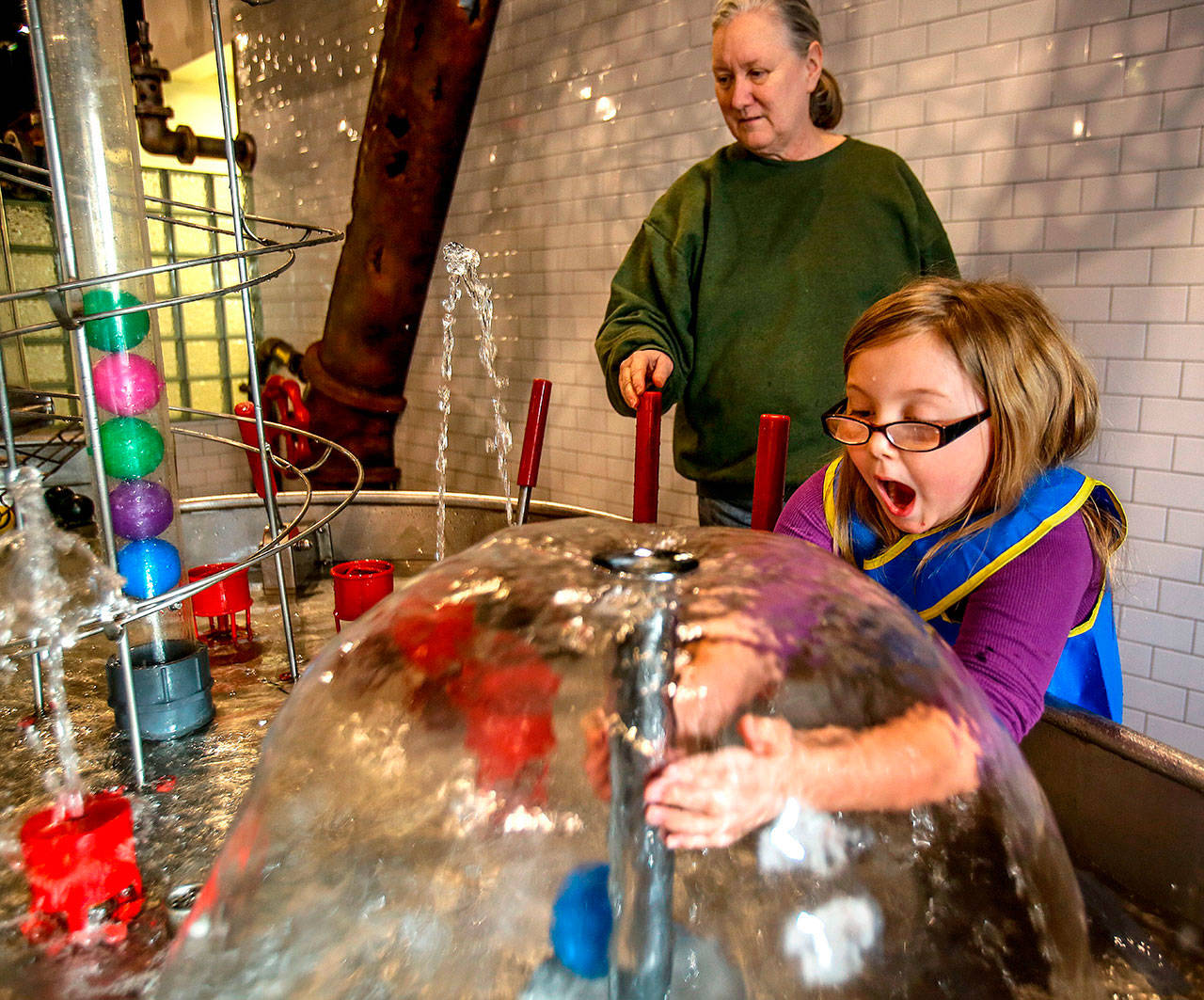By The Herald Editorial Board
This is how engaging the playful learning environment is at the Imagine Children’s Museum in Everett: You’ll rarely see an adult scrolling through her or his phone.
While some of that is parents, grandparents and others keeping up as kids move from exhibit to exhibit, the adults often are also closely engaged with children as they juggle floating balls at the water table, experiment with musical instruments or simply read aloud in the tree house.
The museum provides a place where kids, ages 1 to 12, can learn through play, but it also encourages adults to participate in what each child is learning, said Nancy Johnson, Imagine’s executive director.
Play is crucial to learning and development, Johnson said, because it can help with intellectual education but also emotional development and the skills necessary to work cooperatively with others, to brainstorm and solve problems.
“And it’s a safe place to fail,” she said. “Failure is key to learning,” because it helps kids learn that failure isn’t the end of the process but the next step in problem-solving and reaching a goal.
The museum takes its mission of play and learning seriously, efforts that earlier this year earned the museum accreditation from the American Alliance of Museums. The accreditation process requires museums to meet stringent standards, undergo an onsite review and complete a strategic planning process. Of the more than 33,000 museums, aquariums, zoos and science centers in the U.S., only about 1,000 have been accredited, and fewer than 20 are children’s museums.
Operated as a nonprofit, Imagine also has earned a high rating from Charity Navigator, which evaluates charities nationwide on their financial health and accountability. Charity Navigator’s most recent report gave Imagine a perfect score of 100 for its accountability and transparency and a score of 95 for its financial health, earning a four-star rating overall.
The recent accreditation and its standing as a charity are important, Johnson said, because the museum relies on the support of the community, such as at its recent Men’s Fundraising Breakfast, held late last month at the museum. The fundraising breakfast was among its best attended, Johnson said.
Admission fees and memberships — starting at $90 annually for one child and one adult to $130 for a family — account for about 65 percent to 70 percent of the museum’s revenue, leaving a significant portion for donations and charitable giving.
What that supports are three floors of exhibits and learning spaces that encourage exploration and imagination, including a farm, a jet plane, a bus, a model railroad, a cafe, a wildlife clinic, a rooftop play area (with dinosaur skeletons) and its popular — and wet — Waterworks exhibit that encourages splashing about but also sneaks in hands-on experience with the physics of water.
The museum also offers programs that emphasize art, science, math, engineering, physical activity, culture, theater, reading and storytelling.
More than just support for an award-winning museum, donations also allow Imagine to increase its outreach to the community. Along with financial assistance that reduces admission for families with EBT benefit cards to $3 for up to four family members, the museum also offers monthly free admission nights and free admission for military families on the first Sunday of the month.
More recently the museum has developed programs geared to support “kinship” families, where grandparents and other relatives are raising children, outreach to children of incarcerated parents, and a special monthly session where children on the autism spectrum can explore the museum with reduced lighting and a quieter environment.
The museum also is taking its science labs to day cares in the community, especially those that don’t have the resources to offer the enrichment that all children need.
First opened in 1993, the museum built its current location at Hoyt Avenue and Wall Street in 2004. Since its opening it has served more than 2.6 million visitors with attendance at the museum and at programs topping 243,000 in 2016. That success has the museum and its board of directors beginning plans for an expansion of the museum, Johnson said.
Playing a game of hide-and-seek beneath the fun and games, the museum is an important resource for the region’s families.
“A resource like this is critical to a healthy community,” Johnson said. “And it’s a belly-laugh. It’s fun.”
Learn more
Learn more about Imagine Children’s Museum and how to support its work at www.ImagineCM.org.
Talk to us
> Give us your news tips.
> Send us a letter to the editor.
> More Herald contact information.

























